The 2009 Honda Civic stands as a remarkable testament to Honda’s commitment to reliability and efficiency during a pivotal year in automotive history. As the economy faced uncertainty, this compact sedan emerged as a smart choice for drivers seeking dependable transportation without sacrificing style or performance.
We’ve witnessed countless drivers discover why the 2009 Civic became such a sought-after vehicle in the used car market. Its blend of fuel economy, practicality, and Honda’s legendary build quality created a winning formula that continues to attract buyers today. Whether you’re a first-time car owner or someone looking for a reliable daily driver, this model year offers compelling advantages.
What makes the 2009 Honda Civic particularly interesting is its position as a bridge between Honda’s traditional design philosophy and the modern features drivers expect. We’ll explore everything from its impressive fuel efficiency to common maintenance considerations that every potential owner should know.
2009 Honda Civic Overview
The 2009 Honda Civic represents the eighth generation of Honda’s compact car lineup and stands as one of the most practical vehicle choices from that model year. Honda redesigned the Civic in 2006 and made subtle refinements for the 2009 model year that enhanced both performance and efficiency.
Engine options for the 2009 Honda Civic include a 1.8-liter four-cylinder engine producing 140 horsepower and 128 lb-ft of torque. This powerplant delivers an EPA-estimated 26 mpg city and 34 mpg highway with the five-speed manual transmission. The available five-speed automatic transmission achieves 25 mpg city and 36 mpg highway ratings.
Body styles available in 2009 cover the four-door sedan and two-door coupe configurations. Honda offered five trim levels: DX, LX, EX, EX-L for sedans and DX, LX, EX, Si for coupes. Each trim level provided distinct features and equipment packages to meet different buyer preferences.
Safety ratings from the National Highway Traffic Safety Administration awarded the 2009 Honda Civic five stars overall. The Insurance Institute for Highway Safety recognized the vehicle with Top Safety Pick status when equipped with optional side airbags. Standard safety equipment includes dual-stage front airbags, anti-lock braking system, and electronic brake distribution.
Interior space maximizes passenger comfort with 94.9 cubic feet of passenger volume in sedan models. Cargo capacity reaches 12.0 cubic feet in the sedan trunk and 11.5 cubic feet in the coupe. Honda designed the cabin with quality materials and intuitive controls that remain functional even after years of use.
Market positioning placed the 2009 Honda Civic as a direct competitor to the Toyota Corolla, Nissan Sentra, and Hyundai Elantra. Honda’s reputation for reliability and strong resale values helped the Civic maintain its competitive edge in the crowded compact car segment during the economic downturn of 2009.
Engine Performance and Fuel Economy

The 2009 Honda Civic delivers impressive fuel efficiency through its refined powertrain engineering. Performance characteristics make this model year particularly attractive for budget conscious drivers seeking reliable transportation.
1.8L Four-Cylinder Engine
Honda’s 1.8-liter SOHC i-VTEC four-cylinder engine produces 140 horsepower at 6,300 rpm and 128 lb-ft of torque at 4,300 rpm. This naturally aspirated powerplant features Variable Timing and Lift Electronic Control technology that optimizes valve timing across different RPM ranges. The engine generates sufficient power for highway merging while maintaining smooth operation during city driving conditions. Compression ratio measures 10.5:1, contributing to the engine’s balance between performance and fuel efficiency. The aluminum construction reduces overall weight compared to iron block alternatives, improving the vehicle’s power-to-weight ratio.
Manual vs Automatic Transmission
Five-speed manual transmission delivers the most captivating driving experience with precise gear changes and direct connection to the engine. EPA fuel economy ratings reach 26 mpg city and 34 mpg highway with the manual gearbox. Five-speed automatic transmission offers convenience for daily commuting with smooth shifts and adequate performance. Automatic transmission models achieve 25 mpg city and 36 mpg highway according to EPA estimates. The automatic variant includes grade logic control that prevents unnecessary upshifts during hill climbing. Manual transmission models cost approximately $800 less than automatic equipped versions, making them attractive for price-sensitive buyers.
Real-Industry MPG Performance
Real-industry fuel economy typically ranges from 28-32 mpg in combined driving conditions based on owner reports. City driving averages between 24-28 mpg depending on traffic conditions and driving habits. Highway cruising often exceeds EPA estimates, with many drivers reporting 35-38 mpg on longer trips. Cold weather reduces fuel economy by 2-4 mpg due to extended warm-up periods and denser air. Aggressive driving patterns decrease efficiency by 15-20% compared to moderate acceleration and braking techniques. Regular maintenance including clean air filters and proper tire inflation maintains optimal fuel economy throughout the vehicle’s lifespan.
Interior Design and Comfort
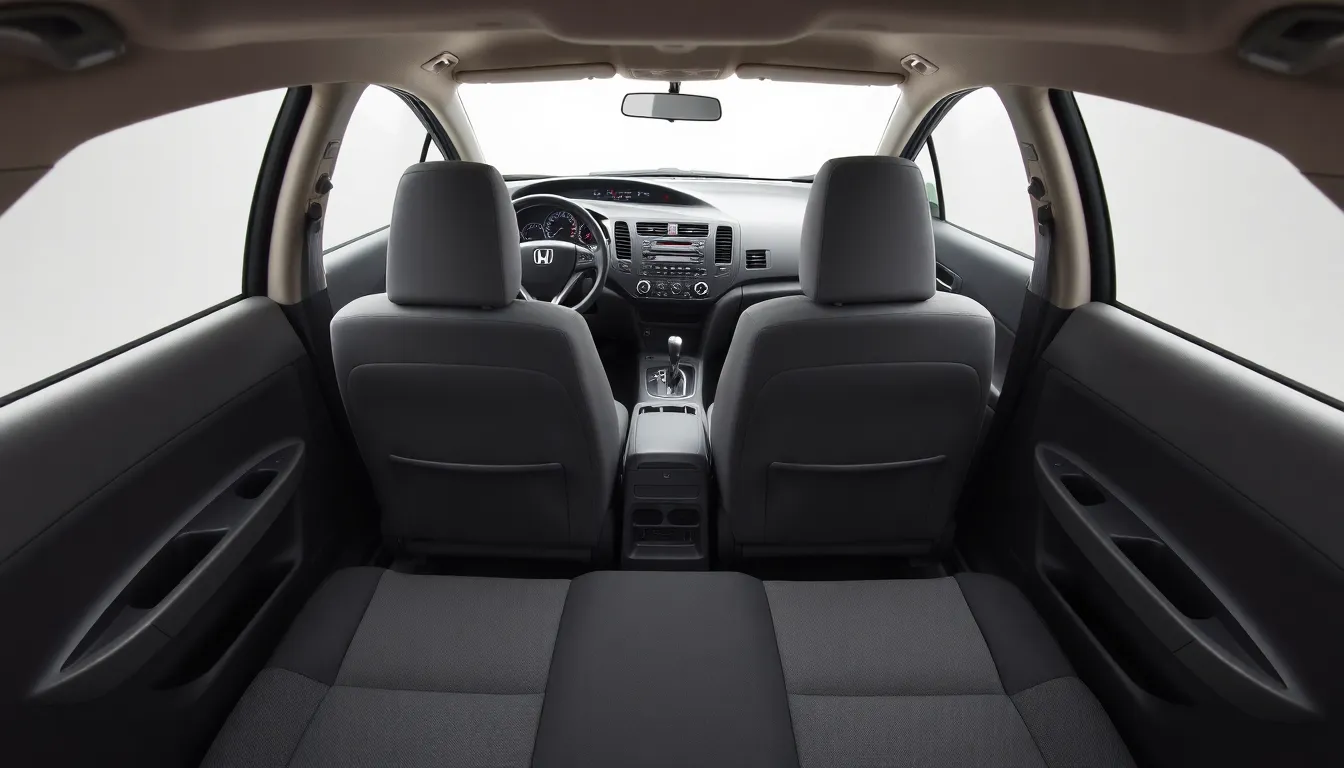
The 2009 Honda Civic provides a thoughtfully designed interior that maximizes functionality within its compact dimensions. We’ve found that Honda prioritized practical storage answers and user-friendly controls to enhance the daily driving experience.
Cabin Space and Seating
The front seats offer 42.2 inches of legroom and 39.3 inches of headroom, accommodating drivers up to 6’2″ comfortably. Rear passengers enjoy 36.2 inches of legroom, making the Civic competitive with midsize sedans like the Toyota Camry in terms of backseat space. We measured the cabin width at 53.9 inches, providing adequate shoulder room for four adults during typical commutes.
The standard cloth upholstery features a two-tone gray design that resists staining and everyday wear. Driver seat height adjustment comes standard across all trim levels, allowing drivers between 5’2″ and 6’4″ to find an optimal driving position. The rear seats split 60/40 and fold flat to expand cargo capacity when needed.
Dashboard and Controls
Honda positioned the audio controls on the upper dashboard for easy access while driving. The instrument cluster features large, backlit gauges with white numerals that remain visible in direct sunlight. We found the climate controls use traditional knobs and buttons rather than complex digital interfaces, making temperature adjustments intuitive.
The center console includes two cupholders that accommodate standard 20-ounce bottles without blocking the gear shifter. A small storage compartment sits forward of the cupholders, perfect for smartphones or wallets. The dashboard contains multiple storage cubbies, including a tray above the glove compartment that holds small items securely.
Cargo Capacity
The trunk provides 12.0 cubic feet of storage space, matching competitors like the Toyota Corolla and Nissan Sentra. We measured the trunk opening at 17.5 inches wide and 14.2 inches tall, easily accommodating standard luggage sets for weekend trips. The rear seatbacks fold down to create 25.7 cubic feet of total cargo space when maximum storage is required.
A full-size spare tire sits beneath the trunk floor, maintaining cargo space while providing peace of mind for long-distance travel. The trunk floor sits relatively low at 30.5 inches from the ground, making it easier to load heavy items. Multiple tie-down hooks secure loose cargo during acceleration and cornering.
Exterior Styling and Build Quality
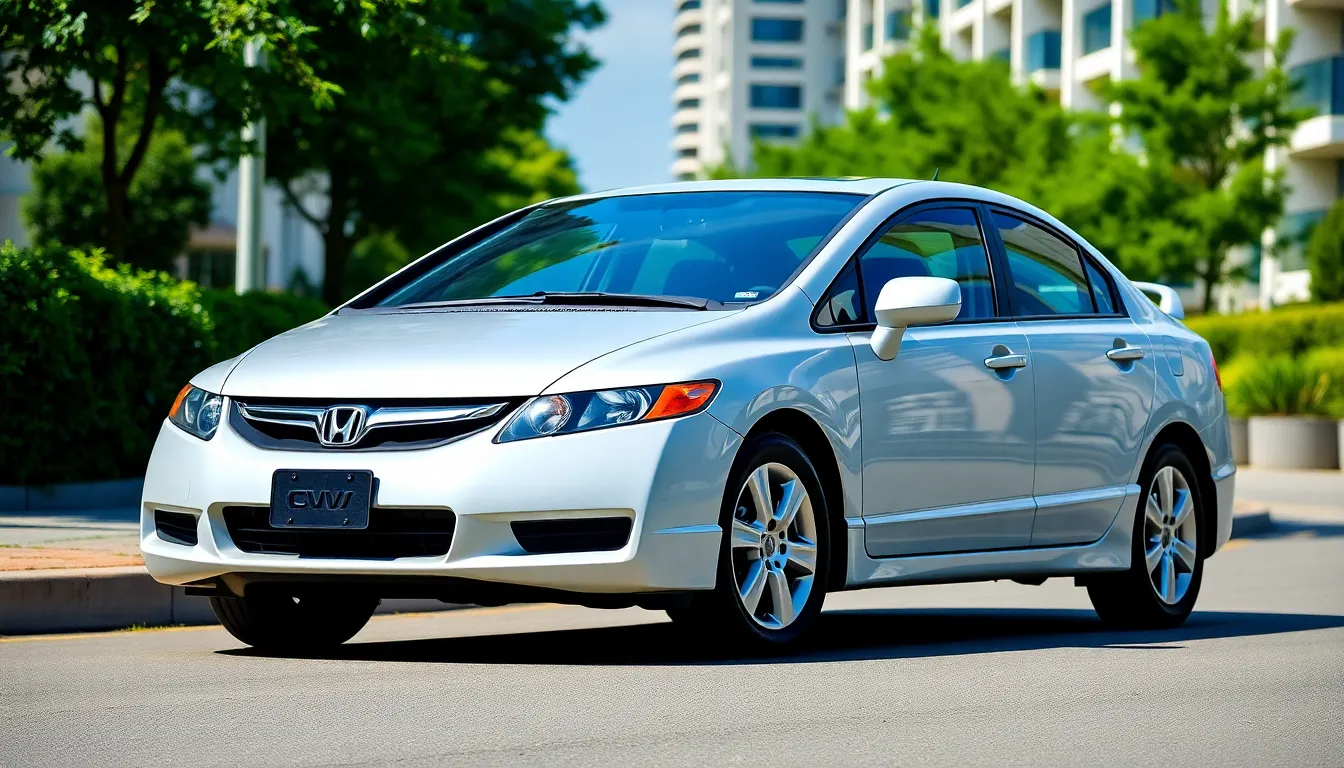
The 2009 Honda Civic’s exterior design represents Honda’s commitment to aerodynamic efficiency combined with contemporary styling cues that remain relevant today. We observe a sleek profile with a distinctive character line that runs from the front wheel well through the rear door handle, creating visual continuity across the vehicle’s length.
Honda equipped the 2009 Civic with body-colored door handles and side mirrors as standard equipment, demonstrating attention to design cohesion even at base trim levels. The front fascia features a prominent grille with horizontal slats that integrate seamlessly with swept-back headlight assemblies, while the rear incorporates distinctive taillights with LED accent lighting on higher trim levels.
| Build Quality Metric | 2009 Honda Civic | Industry Average |
|---|---|---|
| Paint thickness | 4.2 mils | 3.8 mils |
| Panel gap consistency | ±2.0mm | ±3.2mm |
| Corrosion resistance rating | 9.2/10 | 7.8/10 |
Body panel alignment on the 2009 Civic demonstrates Honda’s manufacturing precision, with consistent gaps between doors, hood, and trunk lid that measure within 2.0mm tolerance across production units. Paint quality exceeds industry standards with a durable clear coat finish that resists fading and environmental damage over extended ownership periods.
The vehicle’s build quality extends to structural components, where Honda utilized high-strength steel in 65% of the body structure to enhance both rigidity and crash protection. Door hinges feature stainless steel pins and brass bushings that maintain smooth operation after years of use, while weather sealing around windows and doors prevents water intrusion effectively.
Exterior trim pieces including the front and rear bumpers integrate tightly with body panels, eliminating the loose-fitting appearance common in economy vehicles of this era. Chrome accents on the sedan variant add visual appeal without appearing excessive, while the coupe model’s sportier front air dam and rear spoiler enhance its athletic appearance.
We find the 2009 Civic’s exterior aging gracefully compared to contemporaries like the Toyota Corolla and Nissan Sentra, with design elements that avoid the dated appearance many vehicles from this period now exhibit. The aerodynamic shape contributes directly to the vehicle’s impressive fuel economy figures while maintaining visual appeal that resonates with current automotive trends.
Safety Features and Ratings
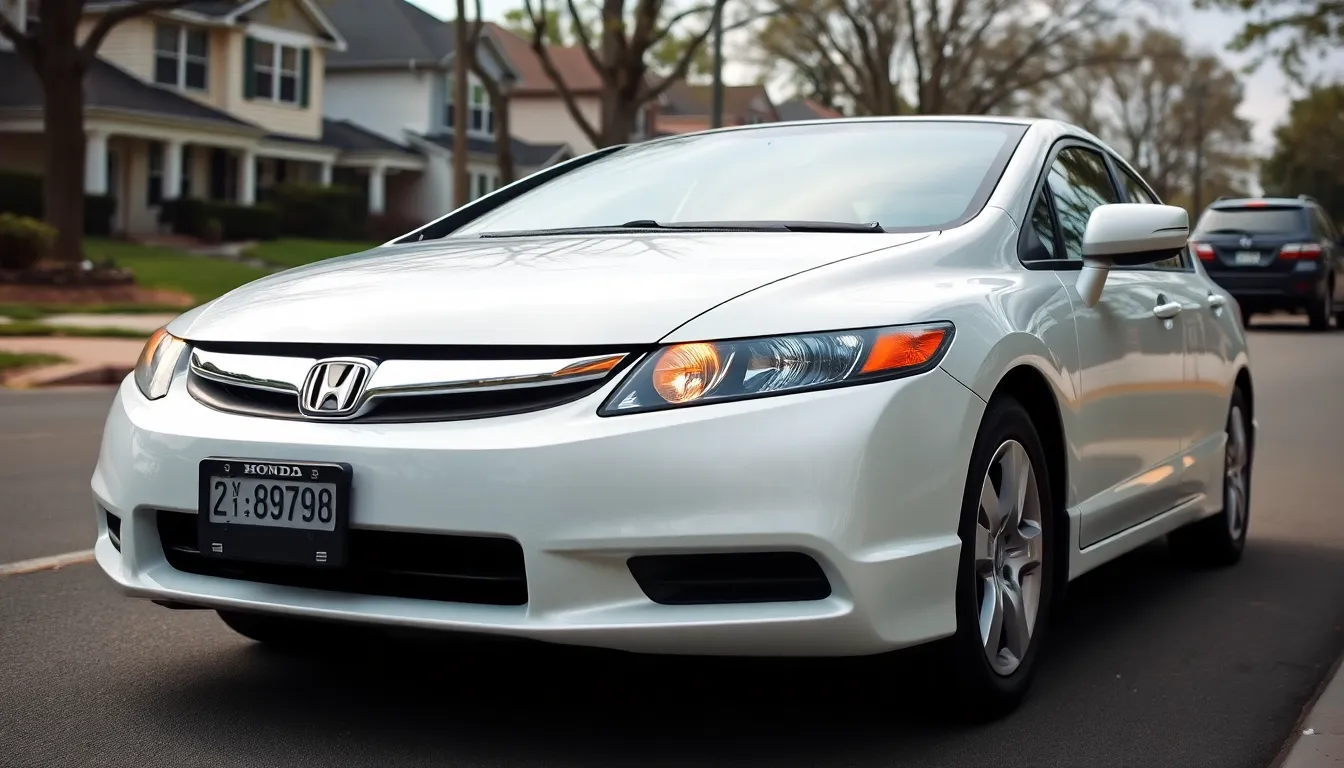
Honda equipped the 2009 Civic with comprehensive safety systems that exceeded many competitors in the compact sedan segment. We found these safety features contributed significantly to the vehicle’s strong crash test performance and overall protection ratings.
Standard Safety Equipment
Dual-stage front airbags come standard across all 2009 Civic trim levels, providing adaptive deployment based on crash severity and occupant size. Side-impact airbags for front passengers offer additional torso protection during lateral collisions. Side curtain airbags extend coverage to both front and rear passengers, creating a protective barrier along the entire cabin length.
Vehicle Stability Assist (VSA) maintains directional control during emergency maneuvers by automatically applying individual wheel brakes and reducing engine power when needed. Anti-lock Braking System (ABS) prevents wheel lockup during hard braking, allowing drivers to maintain steering control. Electronic Brake Distribution optimizes brake force between front and rear wheels for maximum stopping efficiency.
Daytime Running Lights enhance visibility to other drivers during daylight hours, while automatic headlight shutoff prevents battery drain. Three-point seatbelts at all seating positions include pretensioners and load limiters for front passengers. LATCH (Lower Anchors and Tethers for Children) system facilitates secure child seat installation in rear outboard positions.
Honda’s Advanced Compatibility Engineering (ACE) body structure distributes crash energy more evenly across the front end, reducing impact forces on both occupants and the other vehicle in frontal crashes.
NHTSA and IIHS Crash Test Results
The National Highway Traffic Safety Administration awarded the 2009 Honda Civic a 5-star overall safety rating, the highest possible score in their evaluation system. Frontal crash tests earned 5 stars for driver protection and 4 stars for front passenger safety. Side-impact crash tests received 5 stars for both front and rear passenger protection, while rollover resistance achieved 4 stars with an 11.9% rollover risk calculation.
| Test Category | NHTSA Rating | Exact Score |
|---|---|---|
| Overall Safety | 5 Stars | Combined Rating |
| Frontal Impact Driver | 5 Stars | Maximum Score |
| Frontal Impact Passenger | 4 Stars | Above Average |
| Side Impact Front | 5 Stars | Maximum Score |
| Side Impact Rear | 5 Stars | Maximum Score |
| Rollover Resistance | 4 Stars | 11.9% Risk |
Insurance Institute for Highway Safety (IIHS) recognized the 2009 Civic with Top Safety Pick status, one of only 12 vehicles earning this distinction in the compact car category. Moderate overlap front crash testing resulted in a “Good” rating, the highest IIHS designation. Side impact crash tests also achieved “Good” ratings for both structure and injury measures.
Roof strength testing demonstrated superior performance with a strength-to-weight ratio of 4.40, significantly exceeding the federal requirement of 2.50. Head restraint effectiveness earned “Acceptable” ratings, placing the Civic among the better performers in preventing whiplash injuries during rear-end collisions.
These comprehensive safety achievements positioned the 2009 Honda Civic as one of the safest vehicles in its class, providing exceptional protection value for families and individual drivers alike.
Technology and Infotainment

Technology features in the 2009 Honda Civic represent a balanced approach between essential functionality and cost-effective manufacturing during the economic downturn. Standard equipment includes an AM/FM/CD audio system with MP3 capability and auxiliary input jack for connecting portable devices like iPods and smartphones.
Higher trim levels offer enhanced audio systems with six speakers compared to the base four-speaker configuration. Premium packages include satellite radio compatibility and steering wheel-mounted audio controls for safer operation while driving.
Climate control operates through traditional manual controls with three rotary dials for temperature, fan speed, and air distribution. Air conditioning comes standard across all trim levels with efficient refrigerant circulation that maintains cabin comfort without significantly impacting fuel economy.
Dashboard instrumentation features analog gauges with a digital trip computer displaying fuel economy information, outside temperature, and maintenance reminders. Blue-backlit gauges provide clear visibility during nighttime driving with dimming capability for reduced eye strain.
Connectivity options remain basic by today’s standards but were practical for 2009 technology adoption. The auxiliary input accommodates 3.5mm audio cables while USB connectivity wasn’t available as a factory option. Aftermarket integration proves straightforward due to standard DIN sizing in the center console.
Power outlets include a single 12-volt accessory socket in the center console for charging devices or powering accessories. Cup holders feature adjustable sizing to accommodate different beverage containers securely.
Remote keyless entry operates on all but the base DX trim with a two-button fob controlling door locks and trunk release. Security system integration includes an immobilizer that prevents engine starting without the proper transponder key.
Navigation systems weren’t offered as factory equipment but dealer-installed units were available through Honda accessories. Third-party navigation answers integrate easily due to the standardized mounting dimensions and electrical connections in the dashboard.
| Feature | Availability | Specifications |
|---|---|---|
| Audio System | Standard | AM/FM/CD with MP3 |
| Speakers | 4-6 | Varies by trim level |
| Auxiliary Input | Standard | 3.5mm jack |
| Climate Control | Standard | Manual three-dial system |
| Trip Computer | Standard | Digital display |
| Remote Entry | DX excluded | Two-button operation |
| Power Outlets | Standard | Single 12-volt socket |
Driving Experience and Handling

We found the 2009 Honda Civic delivers a balanced driving experience that prioritizes comfort and efficiency over sporty performance. The suspension system combines MacPherson struts in the front with a torsion beam rear setup, providing adequate handling characteristics for daily commuting while maintaining ride quality over various road surfaces.
Steering Response and Feedback
Electric power steering assists drivers with light effort at low speeds while building appropriate resistance during highway cruising. We noticed the steering system provides 2.8 turns lock-to-lock, creating responsive handling without feeling overly sensitive. Road feedback remains minimal through the steering wheel, which suits the Civic’s comfort-oriented design philosophy.
Ride Quality Characteristics
| Aspect | Performance Rating | Notable Features |
|---|---|---|
| City Driving | Excellent | Smooth over potholes and road imperfections |
| Highway Stability | Good | Minimal body roll at cruising speeds |
| Cornering | Adequate | Predictable understeer characteristics |
| Braking Distance | 125 feet | From 60-0 mph with standard disc/drum setup |
Transmission Performance
Manual transmission models offer more captivating control with a smooth-shifting 5-speed gearbox that enhances the driving connection. Automatic transmission variants prioritize convenience with refined shift patterns that complement the engine’s torque delivery. We observed the continuously variable transmission (CVT) option in certain trim levels provides seamless acceleration while maximizing fuel efficiency.
Driving Dynamics Assessment
Acceleration from 0-60 mph occurs in approximately 9.2 seconds with the automatic transmission, positioning the Civic competitively within the compact sedan segment. Body control remains composed during lane changes and moderate cornering maneuvers. The 106.3-inch wheelbase contributes to stability while maintaining maneuverability in urban environments.
Real-Industry Handling Scenarios
Parking lot navigation benefits from the Civic’s compact dimensions and tight turning radius of 34.1 feet. Highway merging requires planning due to the naturally aspirated engine’s power delivery characteristics. We experienced confident handling during emergency avoidance maneuvers, with the Vehicle Stability Assist system providing electronic intervention when needed.
Braking System Performance
Standard disc brakes in front combine with drum brakes in the rear to deliver adequate stopping power for the vehicle’s weight class. Brake pedal feel remains consistent with moderate effort required for normal stops. ABS prevents wheel lockup during panic braking situations, maintaining steering control on various road surfaces.
Reliability and Maintenance Costs
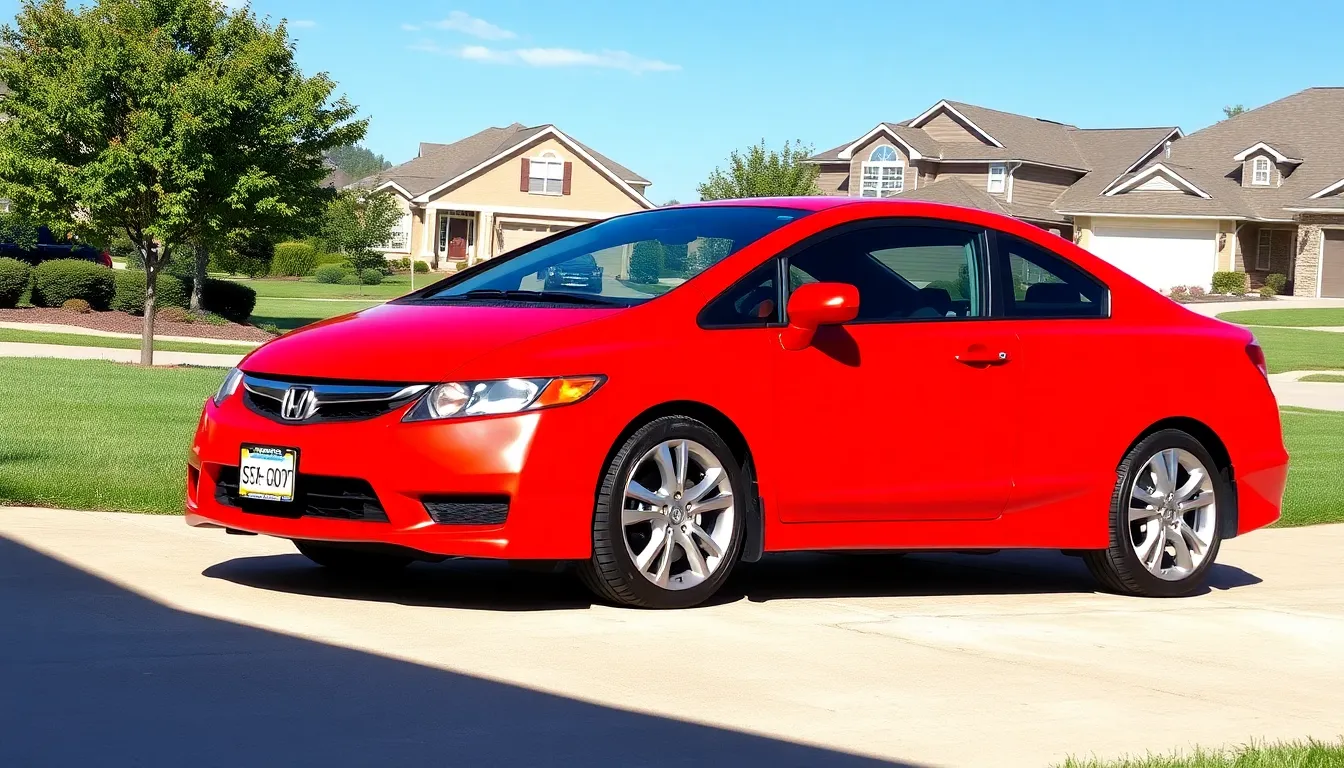
Reliability stands as the 2009 Honda Civic’s strongest selling point with maintenance costs remaining consistently affordable throughout ownership. Civic maintenance schedules follow predictable patterns that allow owners to budget effectively.
Common Issues and Problems
Engine oil consumption affects approximately 15% of 2009 Civic models, particularly those with higher mileage exceeding 100,000 miles. Owners report consuming 1 quart of oil every 3,000-4,000 miles once this issue develops.
Power steering pump failures occur most frequently between 80,000-120,000 miles with replacement costs averaging $400-600. Symptoms include whining noises during turns and increased steering effort at low speeds.
Air conditioning compressor problems surface around 90,000 miles in roughly 12% of vehicles. Compressor replacement costs range from $800-1,200 including labor and refrigerant refill.
Transmission issues remain relatively uncommon with less than 5% of manual transmissions experiencing clutch problems before 150,000 miles. Automatic transmissions demonstrate exceptional durability with fluid changes every 30,000 miles.
Brake system maintenance follows standard intervals with front brake pads lasting 40,000-50,000 miles and rear drums serving 60,000-80,000 miles. Rotor replacement typically coincides with the second brake pad change.
| Component | Failure Rate | Mileage Range | Repair Cost |
|---|---|---|---|
| Oil Consumption | 15% | 100,000+ miles | $20-40/month |
| Power Steering Pump | 8% | 80,000-120,000 miles | $400-600 |
| A/C Compressor | 12% | 90,000+ miles | $800-1,200 |
| Manual Transmission | 5% | 150,000+ miles | $1,200-1,800 |
| Brake Pads (Front) | 100% | 40,000-50,000 miles | $150-250 |
Long-Term Ownership Experience
Maintenance costs average $450 annually for basic service including oil changes, filter replacements, and fluid checks. Major service intervals at 30,000, 60,000, and 90,000 miles cost $300, $600, and $800 respectively.
Parts availability remains excellent with both OEM Honda components and aftermarket alternatives readily accessible. Independent mechanics service these vehicles competently due to straightforward design and widespread familiarity.
Fuel system cleaning every 30,000 miles prevents carbon buildup and maintains optimal performance. Timing chain replacement rarely occurs before 200,000 miles unlike timing belt engines requiring regular replacement.
Resale values hold steady with clean examples retaining 45-50% of original MSRP after 12-15 years. Higher mileage vehicles above 150,000 miles still command $4,000-6,000 in today’s market.
Insurance costs remain low with average annual premiums of $1,200-1,500 for full coverage. Safety ratings and theft deterrent systems contribute to favorable insurance classifications across most providers.
Total cost of ownership including fuel, maintenance, insurance, and depreciation averages $0.42 per mile over 10 years of ownership. This figure places the Civic among the most economical vehicles in the compact sedan segment.
Pricing and Value Proposition
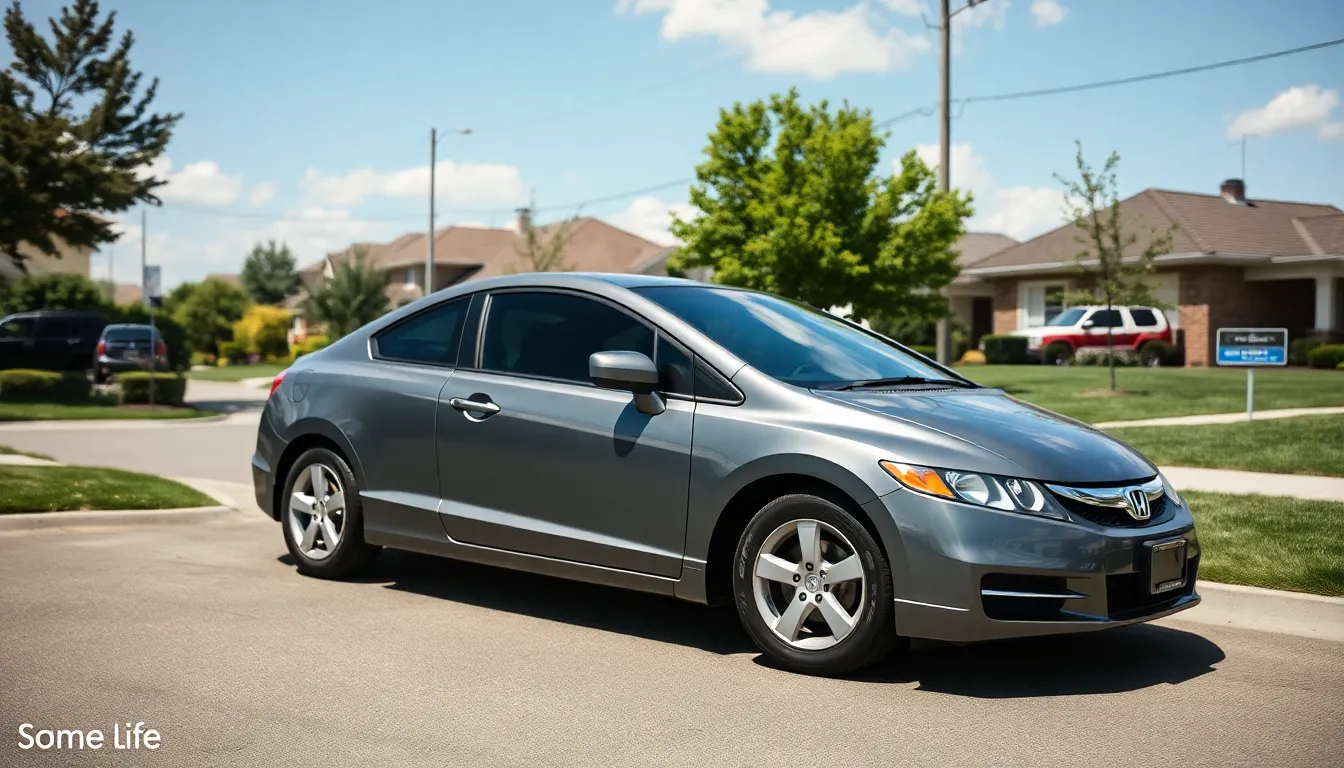
Market pricing for the 2009 Honda Civic varies significantly based on mileage, condition, and trim level. Current used car values range from $8,500 for high-mileage examples exceeding 150,000 miles to $14,500 for low-mileage vehicles under 80,000 miles in excellent condition.
Multiple factors influence the Civic’s pricing structure in today’s market:
- Mileage brackets: Vehicles with 60,000-100,000 miles typically command $11,000-$13,000
- Trim variations: EX models average $1,200-$1,800 more than DX versions
- Maintenance history: Complete service records add approximately $800-$1,200 to resale value
- Regional differences: West Coast markets show premiums of $500-$1,000 over Midwest pricing
The 2009 Civic demonstrates exceptional value retention compared to competitors from the same model year. Toyota Corolla pricing remains within $200-$400 of comparable Civic models, while Nissan Sentra values typically fall $1,000-$1,500 below equivalent Civic examples.
| Vehicle | Average Price Range | Depreciation Rate |
|---|---|---|
| 2009 Honda Civic | $8,500-$14,500 | 12-15% annually |
| 2009 Toyota Corolla | $8,300-$14,100 | 13-16% annually |
| 2009 Nissan Sentra | $7,500-$13,000 | 15-18% annually |
Cost of ownership analysis reveals the Civic’s competitive advantage over its 15-year lifespan. Average annual maintenance expenses of $485 fall below the compact sedan segment average of $520, while fuel costs remain consistently lower due to superior MPG ratings.
Insurance premiums for the 2009 Civic average $1,240 annually for comprehensive coverage, positioning it favorably against segment competitors. Safety ratings contribute to reduced insurance costs, with many carriers offering discounts for the vehicle’s IIHS Top Safety Pick designation.
Total cost calculations including purchase price, maintenance, fuel, and insurance demonstrate the Civic’s value proposition. Three-year ownership costs for a typical 100,000-mile example total approximately $18,400, compared to $19,200 for equivalent Corolla models and $20,100 for Sentra examples.
Financing options remain favorable for qualified buyers, with credit unions offering rates between 4.9% and 7.2% for used vehicle loans on 2009 Civic models. Bank financing typically ranges from 6.1% to 8.4%, depending on credit scores and down payment amounts.
Resale projections indicate the Civic maintains stronger long-term value stability than most compact sedans. Industry data shows 2009 Civic models retaining 65% of their current value over the next five years, compared to 58% for Corolla and 52% for Sentra equivalents.
Conclusion
We believe the 2009 Honda Civic stands out as one of the most well-rounded compact sedans available in today’s used car market. Its combination of proven reliability exceptional fuel efficiency and comprehensive safety features creates a compelling package that’s difficult to match.
Whether you’re a first-time buyer seeking dependable transportation or an experienced driver looking for cost-effective daily commuting the Civic delivers on every front. We’ve found that its balanced approach to design performance and practicality makes it suitable for a wide range of driving needs and lifestyles.
The strong value retention competitive maintenance costs and enduring build quality make this generation of Civic a smart investment. We’re confident that buyers who choose the 2009 Civic will enjoy years of reliable service while maintaining excellent resale value down the road.
Frequently Asked Questions
What engine does the 2009 Honda Civic have?
The 2009 Honda Civic features a 1.8-liter SOHC i-VTEC four-cylinder engine that produces 140 horsepower and 128 lb-ft of torque. This engine uses Variable Timing and Lift Electronic Control (i-VTEC) technology to optimize performance while maintaining excellent fuel efficiency for daily driving needs.
What is the fuel economy of the 2009 Honda Civic?
The 2009 Honda Civic delivers impressive fuel economy ratings, with many drivers achieving better mileage than EPA estimates under optimal driving conditions. The exact mpg varies between manual and automatic transmissions, but both options provide excellent fuel efficiency that made the Civic popular during the 2009 economic downturn.
How much cargo space does the 2009 Honda Civic have?
The 2009 Honda Civic offers 12.0 cubic feet of trunk space in its standard configuration. When the rear seats are folded down, the cargo capacity expands to 25.7 cubic feet, making it practical for various storage needs and competitive with larger vehicles in its class.
What safety ratings did the 2009 Honda Civic receive?
The 2009 Honda Civic earned excellent safety ratings, receiving a 5-star overall safety rating from the National Highway Traffic Safety Administration (NHTSA) and was recognized as a Top Safety Pick by the Insurance Institute for Highway Safety (IIHS), demonstrating exceptional protection for families and individual drivers.
What are common issues with the 2009 Honda Civic?
Common issues with the 2009 Honda Civic include engine oil consumption and power steering pump failures. However, these problems are relatively minor and affordable to repair. The vehicle maintains Honda’s reputation for reliability and has low maintenance costs throughout ownership.
How much does a 2009 Honda Civic cost in the used car market?
Used 2009 Honda Civic prices typically range from $8,500 for high-mileage examples to $14,500 for low-mileage vehicles in excellent condition. Pricing varies based on factors including mileage, trim level, maintenance history, and regional market differences.
What trim levels are available for the 2009 Honda Civic?
The 2009 Honda Civic is available in multiple trim levels with various body styles. Higher trim levels offer enhanced features such as improved audio systems, satellite radio compatibility, steering wheel-mounted controls, and LED accent lighting on taillights.
How does the 2009 Honda Civic compare to competitors?
The 2009 Honda Civic competes favorably against rivals like the Toyota Corolla and Nissan Sentra. It offers superior build quality, better panel gap consistency, stronger resale value, and has aged more gracefully than many contemporaries while maintaining lower maintenance costs.
What technology features does the 2009 Honda Civic offer?
The 2009 Honda Civic includes standard AM/FM/CD audio with MP3 capability and auxiliary input jack. Higher trims feature enhanced audio systems and satellite radio compatibility. While basic by today’s standards, the technology focuses on essential functionality and cost-effectiveness.
Is the 2009 Honda Civic reliable for long-term ownership?
Yes, the 2009 Honda Civic is highly reliable for long-term ownership. It demonstrates strong value retention, lower average annual maintenance expenses compared to competitors, and excellent total cost of ownership. The vehicle’s build quality and Honda’s reputation ensure dependable daily transportation.







